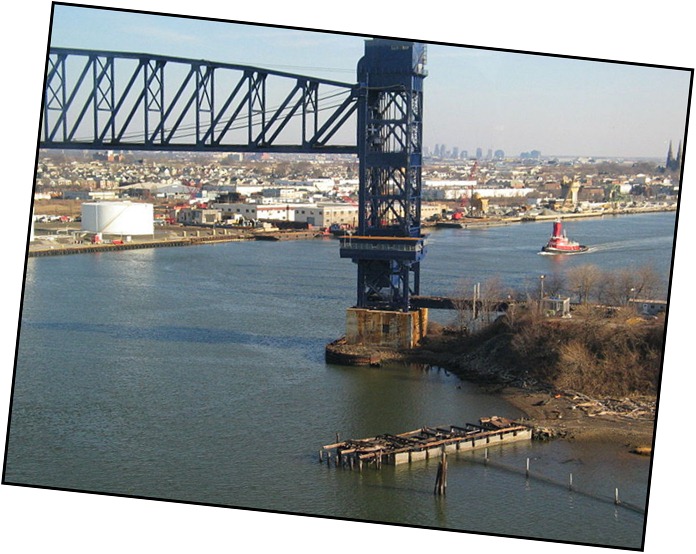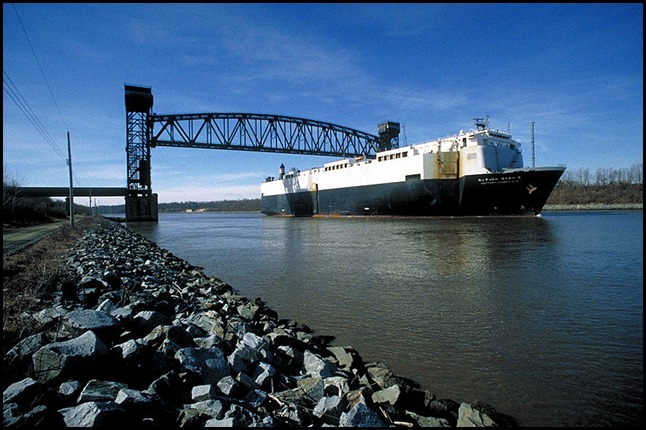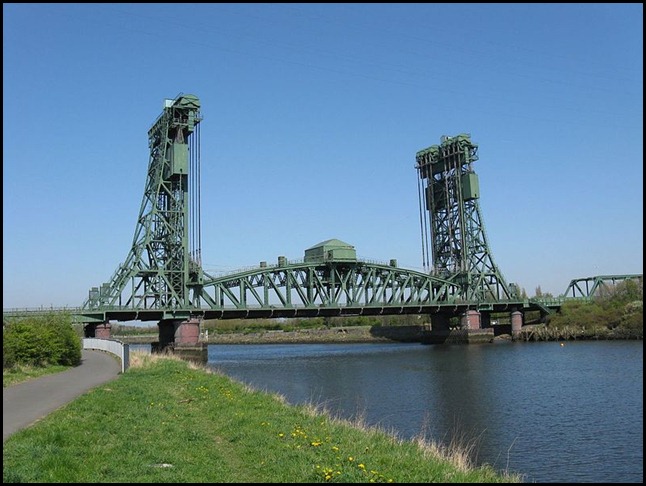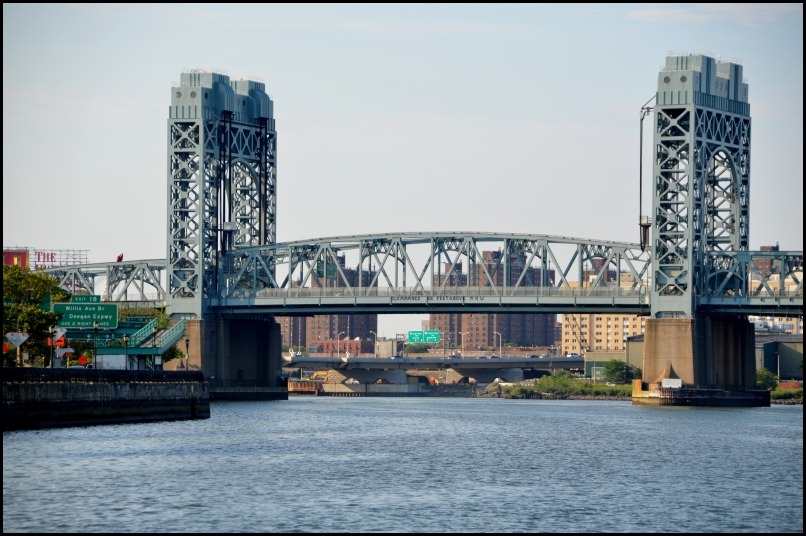Vertical Lift Bridges – Just for Big
Bear
OK when I say I’m doing this just for
Big Bear – well the truth is I also love these bridges. I’m the Numpty who stood
at the front of Beez Neez for twenty minutes on a cold morning in Norfolk to get
these shots of the Old Virginia Railroad Bridge of a
train that didn’t come (I have to admit I was excited at the prospect though,
but don’t tell Bear). So in the end all I got was bridge down; complete with a
vehicular inspection, medium height and up at eighty five feet. Without
realising but now looking back, we have seen quite a few vertical lift bridges.
I am very familiar with the Kingsferry Bridge – slipped in near the end. So here
are a handful, one or two we actually know, been under and or over.

The Arthur Kill
Vertical Lift Railroad Bridge is a railroad-only, vertical lift bridge
connecting Elizabethport, New
Jersey and the Howland Hook Marine
Terminal on Staten Island. The bridge was built by the
Baltimore and Ohio Railroad in 1959 to replace an older swing
span. It is a single track bridge, used mainly to carry garbage out of New York,
diverting traffic off of the parallel Goethals Bridge, which is a section of Interstate
278. It has the distinction of being
the largest vertical lift bridge in the world, with two towers of
215 foot each, and a truss span of 135 foot in height and 558 foot in length.
Are you impressed that I’ve just managed a photograph at a jaunty
angle.

The Broadway
Bridge in New York City crosses the Harlem River Ship
Canal between Inwood and Marble
Hill, both parts of Manhattan (the latter on the mainland and
attached to the Bronx due to the rerouting of the
Harlem River. It is named the Broadway Bridge
because it carries Broadway, which is designated as US
9 here. The bridge also carries the
IRT Broadway – Seventh Avenus Line above the road.
Immediately to the north of the bridge along this line is the Marble Hill –
225th Street station.

The Chesapeake
& Delaware Canal Lift Bridge carries Norfolk Southern rail lines across the Chesapeake
& Delaware Canal. Built by the U.S. Army Corps of
Engineers as part of a canal expansion
project and opened in 1966, the Canal Lift Bridge, the only drawbridge on the C
& D Canal (other lift bridges, carrying vehicular traffic, had since been
replaced with high-level crossings) was owned and operated by the
Pennsylvania Railroad, Penn Central and
Conrail before Norfolk
Southern acquired ownership of it in
1998.

Opened to traffic on the 28th of
February 1934 by the Duke of York, the Tees
Newport Bridge spans the River Tees a short distance upriver from
Middlesbrough Transporter Bridge, linking
Middlesbrough with the borough of
Stockton-on-Tees. Designed by Mott, Hay and
Anderson and built by local company Dorman
Long, who have also been responsible
for such structures as the Tyne Bridge and Sydney Harbour Bridge, it was the first large vertical
lift bridge in Britain. The bridge was opened
by the Prince Albert, (later King George VI).
Constructed around twin 182 foot lifting
towers, the 270 foot bridge span, weighing 2,700 tonnes, could be lifted by the
use of two 325 H.P. electric motors at 52 foot per minute to a maximum height of
120 feet. In the event of motor failure a standby 450 H.P. petrol engine could
be employed to move the bridge, but should both systems fail it was possible to
raise or lower the span manually using a winch mechanism. It was estimated in
1963 by Mr R. Batty, long time Bridge Master at Newport Bridge, that "it would
take 12 men eight hours" to complete the movement by hand. Originally 12 men would have been employed to man the bridge around
the clock, usually requiring four to drive it at any one time. This was
accomplished from the oak-panelled winding house situated midway along the
bridge span. During the 1940’s and early 1950’s this would occur up to twice a
day with an average of 800 vessels per year passing under it, however, as the
number of ships needing to sail up to Stockton-on-Tees declined, so did the usage of the
bridge.

The Kingsferry
Bridge is a combined road and railway vertical lift bridge connecting the Isle of Sheppey to
Kent in South East England. Like the Tees Newport Bridge, it
was designed by Mott, Hay and Anderson, and built by John Howard, with
Dorman Long and Sir William Arrol. It comprises a reinforced
concrete and structural steel deck, supported from
portal-shaped reinforced concrete towers. The
first bridge on the site had been a railway bascule bridge built in 1860 as part of
the London, Chatham and Dover Railway. This was replaced in 1904
by a Scherzer-type bascule bridge, replaced in turn by the present bridge.
The bridge is powered by an electric motor found
beneath the road where there is an engine room either side of the bridge which
operates the wire rope and counter weights that lifts and lowers the bridge. The
bridge has lifted over 100,000 times and every lift has to be recorded. The
bridge can only be lifted when the Sittingbourne railway signalman gives
authorisation once a train travelling either way across the bridge has passed
the relevant track section. The Kingsferry Bridge is
raised up to twenty times a day and I have been over many, many times between
1965 and 1984.

The Willis Avenue
Bridge, New York we went under during our three hour Circle Line cruise
ALL IN ALL THEY HAVE GOT TO BE
EVERY MECANNO SET OWNERS’ BIGGEST CHALLENGE TO BUILD
I THINK THEY ARE JUST
GREAT
|

